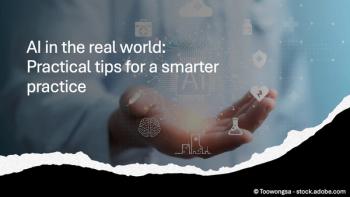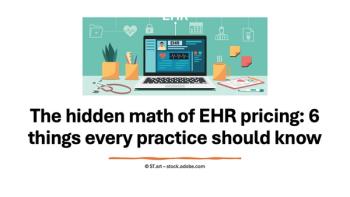
A Defense against the Dark Side of Technology
The study of Semiotics can be used to help us better understand and use technology to its fullest promise, rather than the evils that it may produce.
In Greek mythology, Pandora was given a box and naturally opened it, allowing death and many other evils to escape into the world. She quickly closed the box, but only one item remained.
Science has a lot in common with Pandora’s Box. Every scientific discovery, it seems, gives rise to technologies that, despite the potential to do good, inevitably produce perverse and/or evil results. What we are left with are dilemmas (problems with two options, neither of which isall good or all bad).
When we computerize the personal information on millions of people to benefit them (e.g. Social Security), we create an opportunity for that information to be stolen. When we treat with an antimicrobial, we risk creating a resistant strain. When we present physicians with inflexible EHRs that are difficult to use we encourage them to cut and paste, we create meaningless abbreviations and ignore the patients. Luckily we still have the hope (the thing that didn’t escape Pandora’s Box) that we can use science and its spawn while avoiding the potential for evil.
The underlying issues are not technical. Whether to adopt a technology and how to best implement it are philosophical and ethical questions, not technical ones. Good answers depend on our ability to think critically about scientific and technical matters that may affect medical practice and patients. CME offerings rarely address critical thinking skills directly. To improve requires reading and self-study. The question is: What to read and study?
One day in clinic (TB Clinic), about 20 years ago, I was searching for information about the constituents of sputum. My search turned up a 1904 text on clinical microscopy. I turned to the chapter on the microscopy of sputum and ran smack into “The sputum is of great semiotic significance.” Perhaps you are familiar with Semiotics but I had never heard of it, so I set about to learn more. It is the study of signs, signification and meaning. It is related to linguistics in that signs and symbols are used to communicate, but it’s different because semiotics extends to non-linguistic sign systems. Understanding semiotics can clearly help one think clearly about the content and structure of medical records.
I learned more about semiotics by reading “Semiotics: The Basics” by Daniel Chandler]. In due course, I learned of Charles Sanders Peirce [Wikipedia], an American philosopher, logician, mathematician, and scientist, who is now appreciated for his contributions to logic, mathematics, philosophy, scientific methodology, and semiotics, and for his founding of pragmatism. Saunders is also responsible for describing a form of inference call abduction (aka inference to best explanation) that is especially relevant to medicine.
Another well-known semiotician, Umberto Eco, is the author of “The Name of the Rose,” an exciting story worth reading even if you have already seen the movie starring Sean Connery. Eco insists that he is not attempting to use the story to make any semiotic point, however, if you read the book after Chandler you may detect the influence of semiotics. I now have a better idea about what Hermann Lenhartz, author of the 1904 text, meant when he wrote that “the sputum is of great semiotic significance.”
Next time, I'll discuss some books that explore the cognitive dimension of perception and meaning but until then, let's not forget Pandora. Guidelines are morphing into a technology and are already being misunderstood and misused.
Technology promises such a quick, painless fix for difficult problems, that it is easy to overlook the risks. This is especially the case if one has neither experience [using it] nor critical thinking skills. In this case, the narrative of the "quick fix" goes something like this: Physicians have little to offer beyond what can be obtained from a combination of mid-level providers, artificial intelligence, data-intensive technologies, and practice guidelines. To counter it, physicians need make it clear that we bring something unique and useful to the table. Technology can only address well-defined, static requirements, but the reality of medicine is that medical knowledge is partially wrong and mostly unknown. The portion that can be automated, guided, and managed with artificial intelligence is minuscule compared to the portion that is unpredictably unpredictable. The physician's strength is the ability to deal with ambiguity and the unexpected - to make sense out of nonsense. That is, after all, what differentiates an excellent physician from a “provider” outfitted with a couple of practice guidelines. So, hit the books and eat your vegetables.
Newsletter
Optimize your practice with the Physicians Practice newsletter, offering management pearls, leadership tips, and business strategies tailored for practice administrators and physicians of any specialty.














